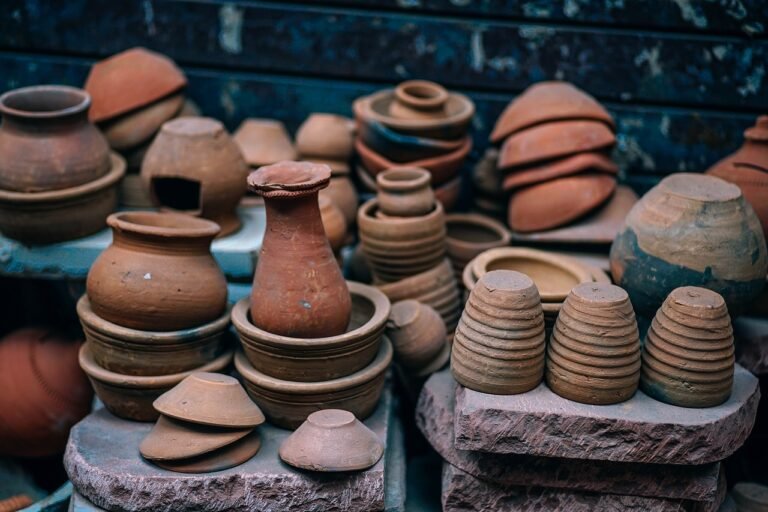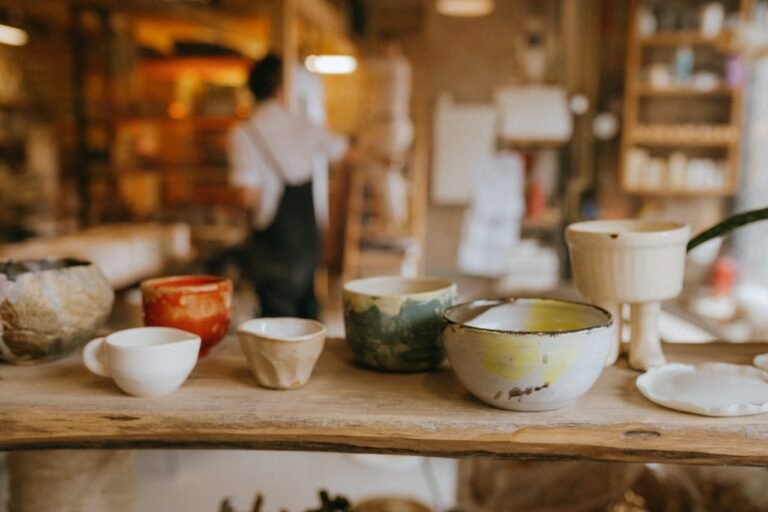What is the Best Clay For Sculpting? 4 common types of clay!
A good way to express your feelings is art, more precisely playing with clay. As we know, clay is a material that can be shaped, hardened, and transformed into beautiful pieces of pottery or sculptures. Depending on what you want to make it can vary from strength, smoothness, details, etc. But what is the best clay for making sculptures?
Polymer clay is the best choice to use for sculpting especially if you don’t have a kiln and studio. It has many advantages, the material is safe for kids, it is not making too much mess, but it can also be fired to make art to remember.
There are many types of clay used for sculpting and different clay will have a different outcome. The best clay for sculpting will of course depend on your equipment.
Do you have a studio where you can use messy clay, is there a kiln you can use for firing?
>> Related: What is the cost of setting up a pottery studio at home?
In this article we will help you choose the best clay for your needs, but the main types of clay are natural clays and synthetic clays.
Natural clays are water-based and air-dry clays which means that they must be wet while you work on them. Once you leave it exposed, clay will dry and become unusable. Air-dry clay can be ideal for kids and beginners.
Pros – don’t need a kiln, can be reused
Cons – keep it moist, otherwise it will dry out, porous
Air-dry clay is very good for hand-building techniques such as coiling, slab construction, and sculpting work. Unlike traditional clay that needs to be fired in a kiln at a high temperature, this clay you can leave at room temperature, and eventually, it will dry in a couple of days. Sometimes it can take a week to completely dry depending on the thickness.
When it is completely dry, you can play with colors and make some decorations using acrylic paints, permanent markers, or ink.
Synthetics clay is oil based, and it cannot be dried on air so you’ll need to fire it in the oven or kiln. It is inexpensive and easy to find in craft stores.
This is a choice for more experienced artists and here are the main types:
Plasticine-type clay stays always soft and can never harden. It is used mostly for making molds or temporary sculpts. It is reusable, and it is often found in stop-motion claymation or just for kids’ play.
Polymer clay – this is plastic-based clay that looks like ceramic clay but easier to work with. Polymer clay comes in colors and also in neutrals. This one needs to be fired but only at low temperatures, around 130C, for example in a normal kitchen oven. It’s by far the most versatile clay, and it is made from safe materials. You can find it in many colors, but also you can mix it with other colored clays.

Once it’s finished, you can add some acrylic paint for decoration.
Tip!
To avoid fingerprint marks you can wear latex gloves, brush your piece with talcum powder, or sanding it after it is cured.
Epoxy clay – Epoxy is a self-hardening clay. Polymer clay is PVC and a plasticizer that hardens when the clay reaches the right temperature for the right amount of time. When two parts are mixed together, it triggers a chemical reaction, and over a 24-hour period, the clay hardens.
What Is The Best Clay For Beginners?
As a beginner, you need to choose a clay that is cooperative and easy to shape. For a first-time user, the smart choice would be air-dried clay whether you are using it only for fun, art therapy, or regular crafting. This fun and mess-free clay are perfect for kids’ projects because it doesn’t need to be fired for example in kilns or ovens.
Air dried clay is meant to be used for decorative purposes only, as it is not safe to store food or drink in it.
Stoneware clay with a fine grog is the best material. It will satisfy your needs and won’t disappoint you because it will hold its form once it is shaped. It can be used in many functions and can be used for throwing, hand-building, and modeling.
What Are The 4 Types Of Clay?
The four most common types of clay are Earthenware clay, Stoneware clay, Ball clay, and Porcelain.
Earthenware clay is the oldest clays used by potters and happens to be the most common today. Earthenware is very plastic and is beginner-friendly.
Good characteristics of material makes it an ideal choice for outdoor sculptures because even if it freezes during the winter, it won’t crack.
You can create sculptures, flowerpots and easily decorate it with glazes and paints.
Even after being fired, earthenware is somewhat soft and can be scratched with a sharp object.
Stoneware clays are moderately plastic, hard, and nonporous. It has a stone like qualities and that is where the name comes from.
Another type of clay used mainly in hand-building and wheel throwing because of its easy modeling characteristics. It can be painted with underglazes, glazes, overglazes, enamels, etc. This clay is very popular for making tableware.
Ball clays contain very limited mineral impurities and are the most plastic clays. They contain a large percentage of kaolinite and quartz, commonly used for floor tiles, toilet bowls, vases, kiln furniture, and tableware.
During firing this clay it has the biggest shrinkage factor and has slippery characteristics. That’s why it is mainly used in a process known as slip casting.
Porcelain
Also known as Kaolin clay, this type of clay is incredibly popular for making dinnerware. They fire at high temperatures and after firing the color of this clay is white.
It is the least plastic clay, so it makes it very hard to modeling. Mainly used in wheel throwing and cast slipping to create tableware, vases, and other decorative objects.
| Type of clay | Color | Uses | Firing temperature |
| Earthenware | Mostly warm. The wet clay has a tone of Brown, red, orange, or grey | Sculpting, hand-building, and wheel throwing | 998 to 1142 °C |
| Ball clays | Grey, After firing, they obtain a light buff color, white | Floor tiles, toilet bowls, vases, kiln furniture, and tableware | 2345℉ (1285℃) |
| Stoneware | White, grey, and all the way to brown when wet | Tableware | 2106 to 2262 ℉ (1152℃ to 1239℃) |
| Porcelain or China ceramics | White | Dinnerware | 2381℉ and 2455℉ (1305℃ and 1346℃) |
Why Does My Air Dry Clay Keep Cracking?
The cracking of air-dried clay is pretty normal and sometimes your sculptures are going to crack. This is caused by shrinkage because the water inside the clay body is evaporating.
If your pieces are constantly cracking, try to avoid the oven and dry it a little slower.
>> Related: How Do I Prevent My Polymer Clay Sculptures From Breaking? (All you need to know)
What Clay Do Professional Sculptors Use?
For a 3 dimensional piece of art professionals usually use higher quality oil-based clay known as Plasticine. The most popular clay for everyday modeling among the artists would be Super Sculpey.
Preferability of course depends on your desires and what is your end goal.








